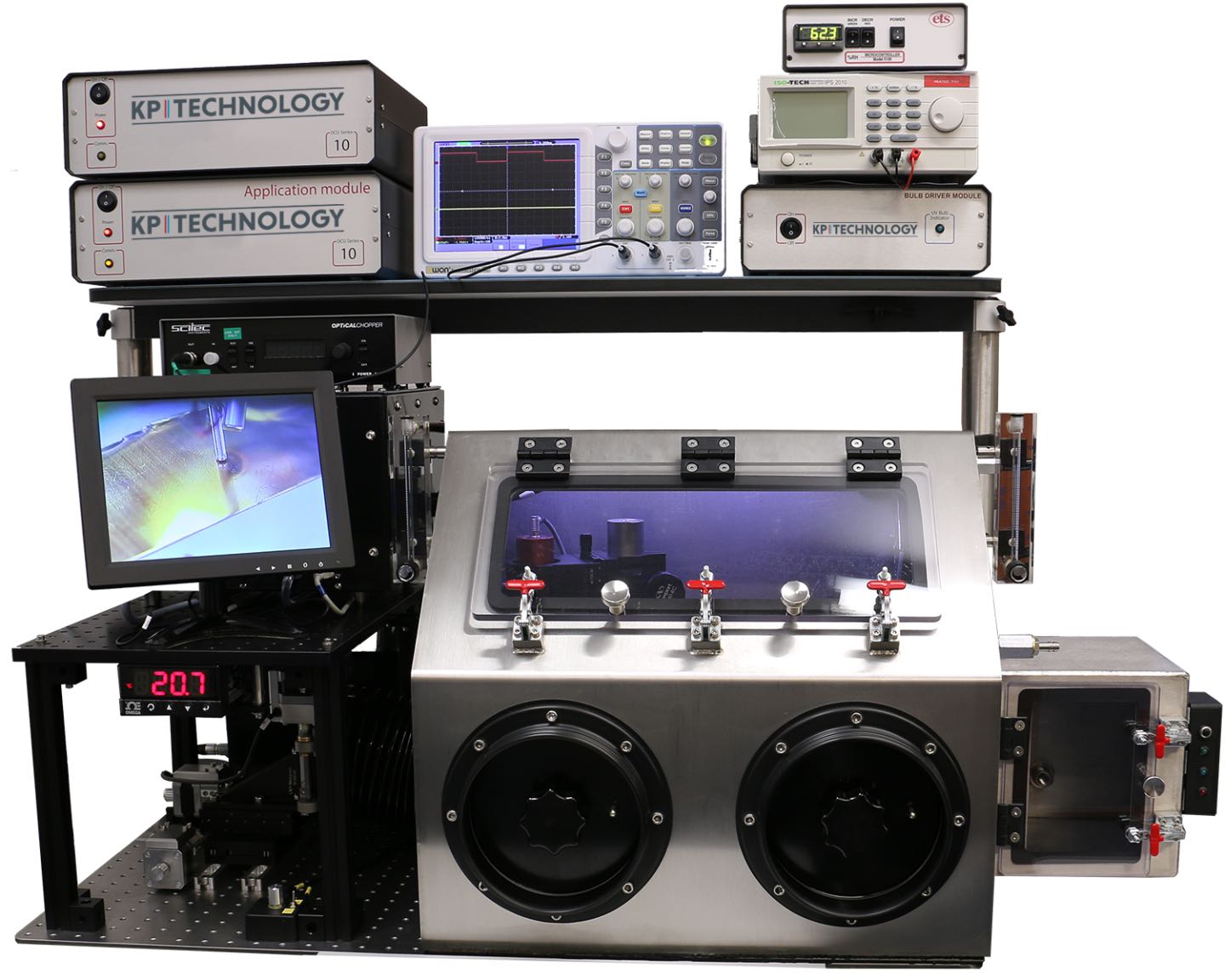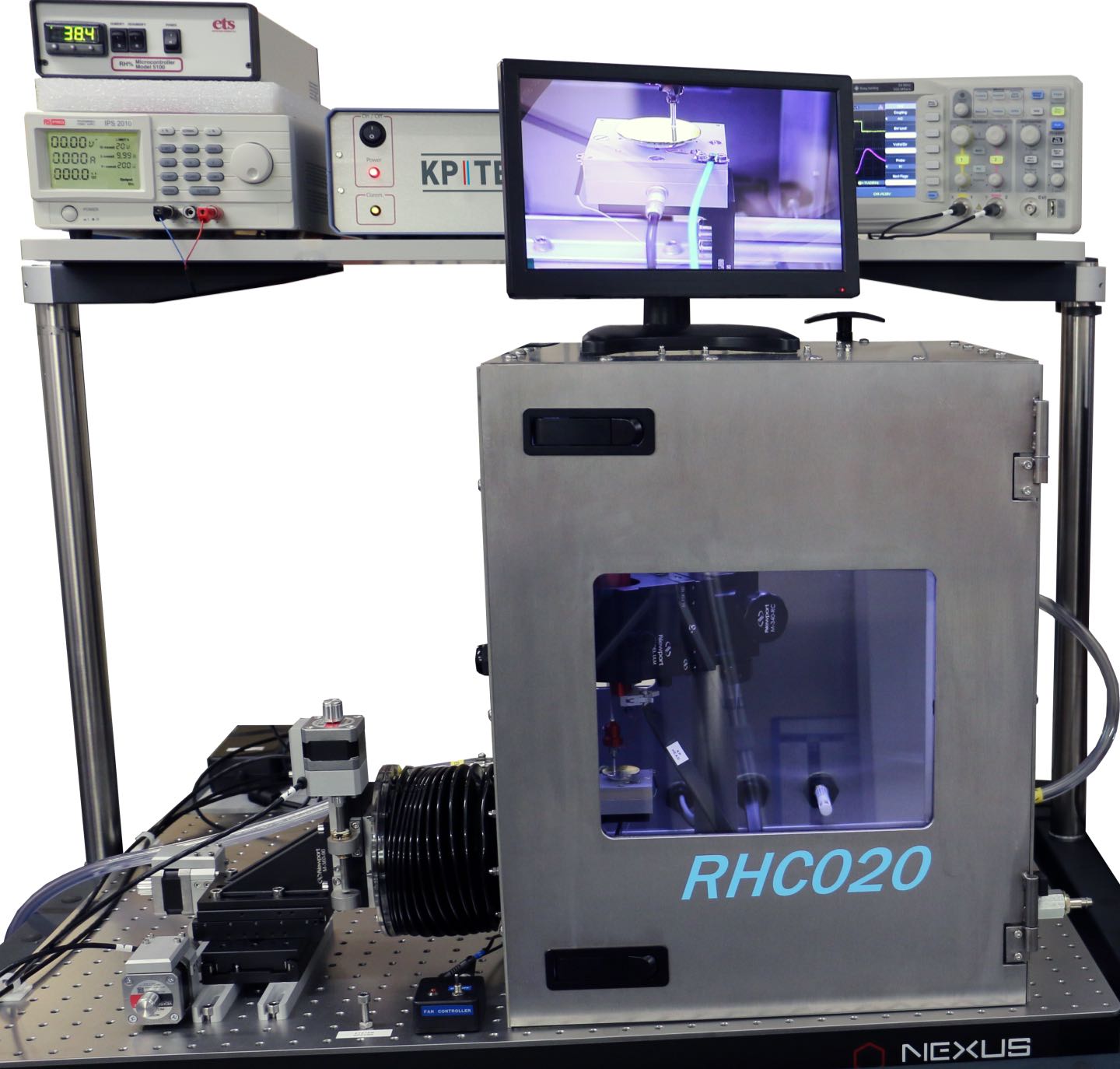Controlled Atmosphere
KP Technology offer a range of Kelvin Probes that work in a controlled environment including automatic control of relative humidity within the Kelvin Probe housing and integrated nitrogen atmosphere control.
All our Kelvin Probes are built with the unique Baikie System to ensure reliable and repeatable measurements to support your research.

Ambient Pressure Photoemission Spectroscopy with Nitrogen Environment
The APS04-N2-RH incorporates a tuneable deep ultra-violet (UV) source outputting 3.4 - 7.0 eV, for absolute work function and highest occupied molecular orbital (HOMO) measurements, a surface photovoltage spectroscopy (SPS) module outputting 400 - 1000 nm for Voc and Eg measurements, together with a 50 x 50 mm scanning area for planar relative work function measurements (Fermi level).
This system allows absolute work function determination in the presence of a nitrogen atmosphere. Our dedicated software allows the user full control of the energy scan ranges, tip potential, signal gain and averaging. Cube or square root fitting of the emission data over user-selectable photon energy, normalised light intensity, and baseline correction.
Download the product brochure for more information on the Ambient Pressure Photoemission Spectroscopy with Nitrogen Environment Kelvin Probe, including technical specifications, example measurements and add-on options.

Relative Humidity Kelvin Probe
The Relative Humidity Kelvin Probe (RHC) systems are the ideal solution for monitoring samples in a controlled atmosphere for contact potential difference (CPD)/work function (Φ) measurements. Our RHC systems can automatically control the relative humidity within the chamber from 20% to 85% using the easily programmable software.
As well as RH control, the RHC020 and RHC040 Kelvin Probe systems come with the KP Technology Scanning Kelvin Probe platform, perfect for plotting the effect of corrosion over the surface of a sample and providing more insight into corrosion protection and resistance.
The RHC040 also integrates nitrogen atmosphere control with the ability to go down to <1% oxygen within the system.
The latest materials and applications highlighted in published papers includes, Perovskite nanocrystals, polymer solar cells, light alloys, organic photovoltaics, indium tin oxide, cerium oxide thin films and corrosion resistance.

